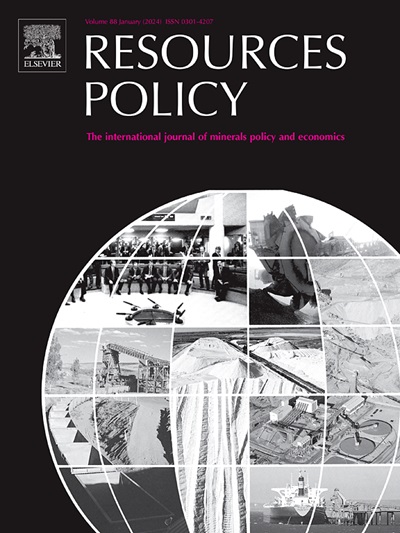Technology adoption in the Canadian mining sector: A systematic scoping review
IF 10.2
2区 经济学
0 ENVIRONMENTAL STUDIES
引用次数: 0
Abstract
As the Canadian mining sector adopts new technologies, such as autonomous vehicles and artificial intelligence, there is the potential to reshape the future of work and the development of mining in Canada, impacting surrounding communities and regions. However, knowledge identified in the literature about the current trends, drivers, and barriers for the adoption of emerging technologies in the Canadian mining sector is limited and presents a clear research gap. This article reports on the findings of a non-traditional systematic scoping review focused on understanding current trends in technology adoption. More specifically, our team reviewed articles in the Canadian Mining Journal, a trade journal specific to our study area, to assess the main drivers, barriers, and opportunities for technology adoption in the Canadian context. Through this research, we have discovered that multiple drivers exist in the adoption of new technologies such as to increase productivity/efficiency, improve worker health and safety, and to increase sustainability. Although barriers were not as explicit, there were also concrete challenges to adopting new technologies identified such as mining culture and attitudes, technology and infrastructure challenges, and implementation challenges. Our research also highlights the need to adapt existing technology adoption theories to account for industry-specific factors such as the importance of health and safety. Additionally, this research provides insights for mining companies, technology providers, policymakers, and other stakeholders to develop strategies that support technology adoption and innovation in the mining sector.
加拿大采矿部门的技术采用:系统的范围审查
随着加拿大采矿业采用自动驾驶汽车和人工智能等新技术,有可能重塑加拿大未来的工作和采矿业发展,影响周边社区和地区。然而,文献中关于加拿大采矿业采用新兴技术的当前趋势、驱动因素和障碍的知识是有限的,并且存在明显的研究差距。这篇文章报告了一个非传统的系统范围审查的结果,重点是了解技术采用的当前趋势。更具体地说,我们的团队回顾了《加拿大矿业杂志》(Canadian Mining Journal)上的文章,这是一本专门针对我们研究领域的行业杂志,以评估在加拿大背景下采用技术的主要驱动因素、障碍和机会。通过这项研究,我们发现采用新技术存在多种驱动因素,例如提高生产率/效率,改善工人健康和安全,以及增加可持续性。虽然障碍不那么明确,但在采用新技术方面也存在确定的具体挑战,例如采矿文化和态度、技术和基础设施挑战以及执行挑战。我们的研究还强调,需要调整现有的技术采用理论,以考虑健康和安全等行业特定因素的重要性。此外,本研究还为矿业公司、技术提供商、政策制定者和其他利益相关者提供了见解,以制定支持矿业部门技术采用和创新的战略。
本文章由计算机程序翻译,如有差异,请以英文原文为准。
求助全文
约1分钟内获得全文
求助全文
来源期刊

Resources Policy
ENVIRONMENTAL STUDIES-
CiteScore
13.40
自引率
23.50%
发文量
602
审稿时长
69 days
期刊介绍:
Resources Policy is an international journal focused on the economics and policy aspects of mineral and fossil fuel extraction, production, and utilization. It targets individuals in academia, government, and industry. The journal seeks original research submissions analyzing public policy, economics, social science, geography, and finance in the fields of mining, non-fuel minerals, energy minerals, fossil fuels, and metals. Mineral economics topics covered include mineral market analysis, price analysis, project evaluation, mining and sustainable development, mineral resource rents, resource curse, mineral wealth and corruption, mineral taxation and regulation, strategic minerals and their supply, and the impact of mineral development on local communities and indigenous populations. The journal specifically excludes papers with agriculture, forestry, or fisheries as their primary focus.
 求助内容:
求助内容: 应助结果提醒方式:
应助结果提醒方式:


